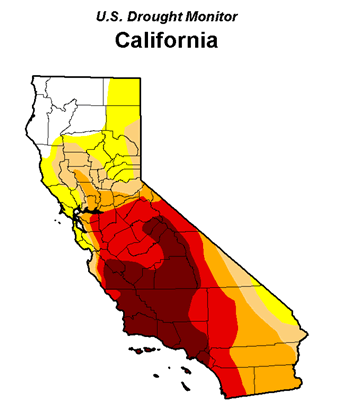California Drought

After a very wet end to 2012, the first half of 2013 turned out to be California’s driest start to the calendar year on record in over 100 years. To make matters worse, the state went on to have a record warm winter in the intervening years. Large areas within the state continue to recover from what was considered extreme drought conditions, placing considerable strain on water supplies. A significant portion of the state is still experiencing exceptional drought, and reservoirs aren’t close to being filled. In response, government officials continue to place emphasis on conserving precious water resources.
Dramatic Rate Increases
Given tighter supply, water rates have climbed dramatically. In 2016 alone, commercial water rates in San Diego, for instance, have increased 16%. In San Francisco, water rates increased 23% between 2014 and 2016, while sewer rates rose 12%. The story of rapidly rising costs is similar in most California cities.
What Can an Organization Do to Lower Their Water Usage?
Smarter Irrigation Can Help
Check out 101 tips for lowering your water use.
Landscape irrigation is one of the largest uses of water by commercial entities. Planting more drought-tolerant plants can help lessen the amount of water you use. Most landscape is overwatered, so with more accurate watering – giving landscape only the water it needs and no more – you can make a huge difference in your overall usage. Deploying a weather-based irrigation system like HydroPoint WeatherTRAK can not only save you money, but free up maintenance resources, improve the health of your landscape and even lower your risk of liability from slip and fall incidents.
Carefully Monitor Water Use to Eliminate Surprises
With a leak and flow monitoring solution such as HydroPoint WaterCompass, you’ll get visibility into your true water usage, both indoors and out. Think of it like insurance against potential water problems – leaks, burst pipes, water theft, and anomalous use.
Drought Resources
- California local water agency restriction information
- Status of state reservoirs
- California State Water Board – Drought emergency regulations and supporting documents
- Information on financial assistance for water-related infrastructure projects from the California Water Development Board

